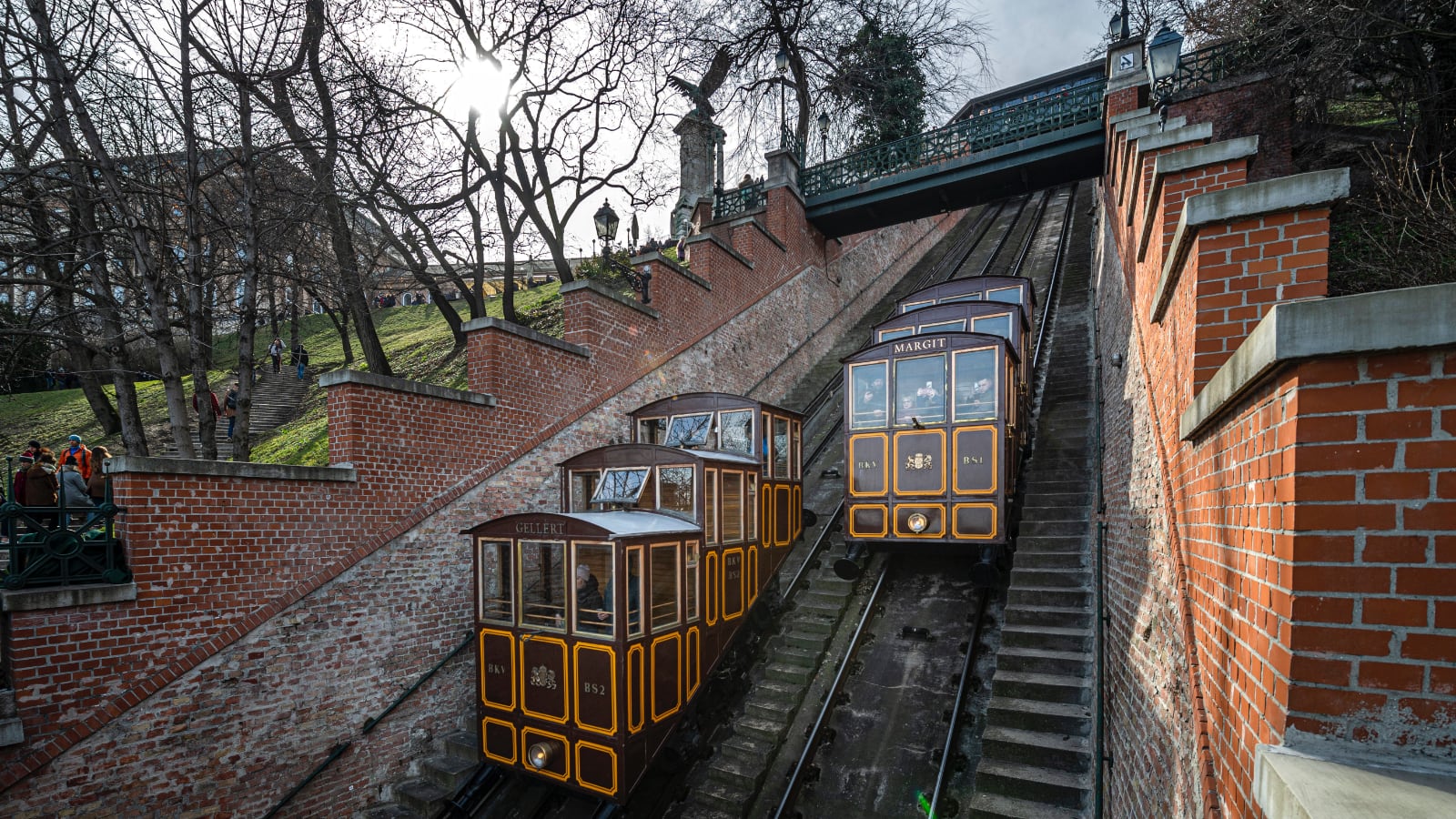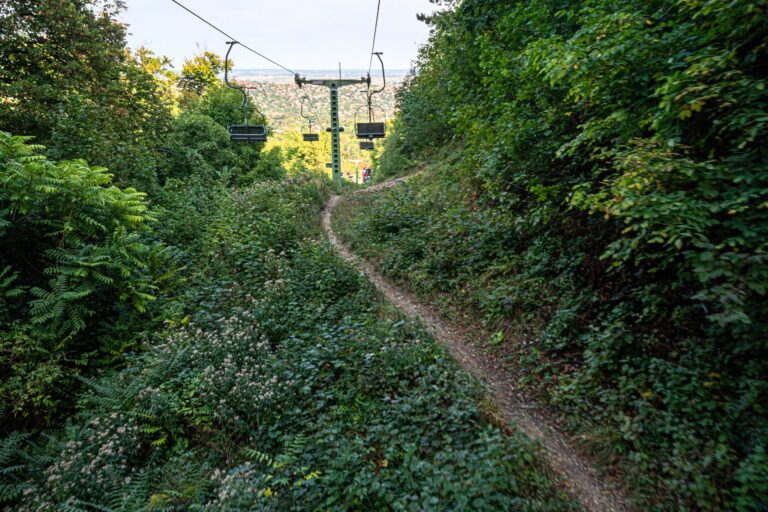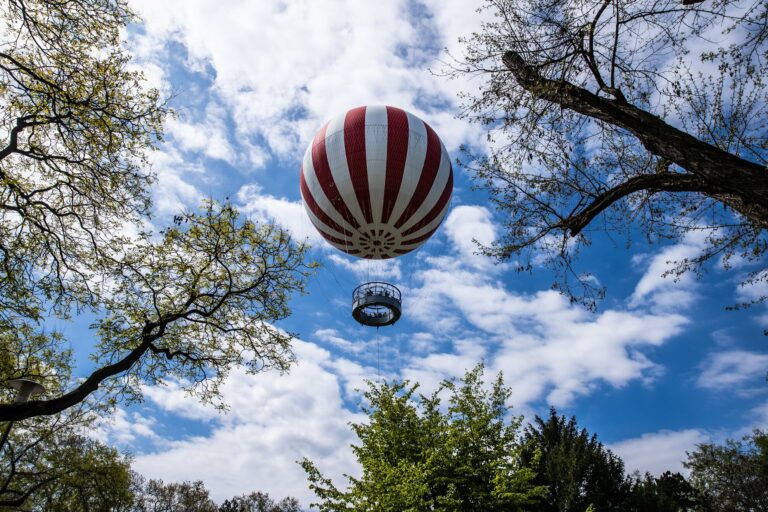Budapest Castle Hill Funicular – all you need to know about the topic

The Budapest Castle Hill Funicular commenced its operation on March 2, 1870, connecting the Danube bank with the Buda Castle District. It is the second oldest funicular system in Europe. It starts from Clark Ádám Square and goes up to the Turul statue. The journey is 95 meters long, with an elevation of 50 meters, which translates to a 48% incline. Each car can accommodate 24 passengers.
History of Buda Castle Hill Funicular
As you already know, the Buda Castle Funicular was built to provide an efficient and scenic means of transportation between the lower city and Buda Castle. It was constructed under the direction of Ödön Széchenyi, the son of István Széchenyi, a prominent Hungarian politician and reformer. The funicular opened on March 2, 1870, and was primarily aimed at improving accessibility for residents and visitors. Its establishment was part of broader efforts to modernize the city and enhance its infrastructure. The funicular quickly became a beloved feature of Budapest, blending utility with historical charm. At the time of the funicular’s construction, there was a so-called “Pleasure House” operating on top of the Tunnel, likely demolished in the 1970s.
Upon its launch in 1870, a 35-horsepower steam engine located at the lower station powered the vehicle. This engine essentially assisted the haulage, as the two cars pulled each other. The Budapest Castle Hill Funicular was the second of its kind to be commissioned in the world, presenting a significant challenge to engineers. After its completion, it was tested continuously for several days, and the ropes were even cut to test the emergency brake.
The funicular has had only one accident in its operation, in 1896, attributed to unfortunate circumstances. Overloading occurred, the engineer’s shift ended, and he left the operation to the stoker, who braked too late, causing the cars to crash into the wall. The passengers only suffered minor injuries.
During the World War II bombings in 1945, the funicular was hit. The restored funicular resumed operation on June 3, 1986, now powered by electric motors. The 54-kilowatt electric motor is placed in the machine room below the upper station.
The return ticket system is due to the Funicular’s two cars, named Margit and Gellért, being connected in a pendulum-like manner, meaning they counterbalance each other. As one car descends, the other ascends.

Buda Castle cable car – technical details
The Budapest Castle Hill Funicular operates on a 95-meter track with a vertical rise of 50 meters and an incline of 48%. It features two carriages that travel simultaneously, counterbalancing each other. As we mentioned above, each carriage can accommodate 24 passengers, providing a short yet scenic ride. The funicular is powered by an electric motor and a counterweight system.
Where does the Budapest Funicular take you?
The Budapest Castle Hill Funicular takes you from the base of Castle Hill at Clark Ádám Square up to Buda Castle. This short yet scenic journey provides easy access to the historic Buda Castle complex, which includes attractions such as the Hungarian National Gallery, the Budapest History Museum, and the National Széchényi Library. The ride offers beautiful views of the Danube River and the Pest side of the city, making it a popular choice for tourists visiting the castle and its surrounding areas. Once you reach the top, you can explore the grounds of Buda Castle and discover Budapest’s Royal Palace, a UNESCO World Heritage site. The Royal Palace is a must-see for history enthusiasts, offering insight into the city’s royal past and architectural splendor. From the Funicular, visitors can easily access and explore this historic landmark, making it a convenient and enjoyable part of their Budapest experience. One of the highlights of Castle District is the historic presidential residence, known as the Sandor Palace, which sits adjacent to Buda Castle. This elegant building has been the official residence of the President of Hungary since 2003 and offers guided tours for those interested in learning more about its rich history and significance in Hungarian politics.
How do I get to the Funicular in Budapest?
To reach the Budapest Castle Hill Funicular, start by heading to the Buda side of the city. If you use the metro, take Line M2 (Red Line) to Batthyány Square or Line M1 (Yellow Line) to Vörösmarty Square. From there, you can walk to Clark Ádám Square, where the funicular station is located. Alternatively, take tram 19 or 41 to the Chain Bridge stop or bus 16 directly to Clark Ádám Square. If you’re on foot, cross the Széchenyi Chain Bridge from the Pest side, and you’ll find the funicular station at the base of Castle Hill. For those driving, parking is available nearby but can be limited, so public transport is advisable.

Ticket prices of the Budapest Castle Hill Funicular
Tickets for the Budapest Castle Hill Funicular can be purchased at the lower station or online through the official website.
Full price return ticket: 5,000 HUF (12,7 EUR)
Reduced price return ticket: 2,000 HUF (5 EUR) (children 3-14 years old)
Free admission: children under 3 years
Family ticket (2 adults + up to 3 children): 12,000 HUF (30,4 EUR)
Discounts (such as senior or student) are not accepted on Budapest Castle Hill Funicular. One-way tickets are not available; only return tickets can be purchased, which remain valid for one year.
Operating hours
The Budapest Castle Hill Funicular operates daily from 08:00 to 22:00, with the last ticket sold at 21:50. Trains depart roughly every 5–10 minutes depending on passenger demand. The funicular is closed for scheduled maintenance on Mondays of odd-numbered weeks, unless that day is a public holiday, in which case the maintenance takes place on the next working day .
For 2025, the planned maintenance closures are on:
January 13, 27; February 10, 24; March 10, 24; April 7–16; May 5, 19; June 2, 16, 30; July 14, 28; August 11, 25; September 8, 22; October 6–17; November 3, 17; December 1, 15, 29
Buda Castle Hill Funicular – what visitors get for the ticket?
The ride offers panoramic views of the Danube River, the Széchenyi Chain Bridge, and the city of Budapest. Since it has been operational since 1870, providing a historical context and charm. The visitors get a convenient, easy and quick access to Buda Castle, a key historical and cultural site. The incline ride gives a unique perspective of Budapest’s landscape, making it a memorable part of any visit to the city.
Is Budapest Funicular worth it?
The Budapest Funicular (also known as Funicular Budavári Sikló) is definitely worth experiencing for several reasons. It provides a scenic and unique mode of transportation to Buda Castle District, offering stunning panoramic views of the Danube River and the city. The historical significance of the funicular, operational since 1870, adds a nostalgic charm to the ride. It’s a quick and convenient way to reach the top of Castle Hill, saving visitors a steep uphill walk. Additionally, the funicular is a popular tourist attraction in Budapest, drawing visitors from around the world. Once at the top, travelers can explore the Buda Castle District, which is home to several historical and cultural landmarks, including the Royal Palace and Matthias Church. There are also various Buda Castle tour options available, allowing guests to delve deeper into the rich history and architecture of the area.
During the tour, it’s worth stopping by the Rock Hospital Budapest, which offers an impressive experience for every visitor.
The funicular also offers an insight into Budapest’s transportation heritage. For families, children often find the ride particularly exciting. The journey is short but memorable, making it a popular choice among tourists. The convenience of frequent departures ensures minimal wait times. The views from the funicular are unmatched, especially during sunset or at night when the city lights up. Overall, the Budapest Funicular combines practicality with a delightful historical experience, making it a must-do activity in the city.

FAQ
What is a funicular railway?
A funicular railway is a type of cable railway system that uses two cars attached to a cable. As one car ascends, the other descends, allowing for efficient transportation on steep inclines. This system is often found in hilly or mountainous regions, providing scenic views and a unique travel experience.
How does a funicular work?
Funiculars operate on a simple principle of gravity and counterbalance. The cars are connected by a cable that runs along a track. When one car goes up the incline, the other car descends, balancing the weight and allowing for minimal energy consumption. The system is powered by a motor that helps control the speed and movement of the cars.
What are the safety features of a funicular railway?
Funicular railways are designed with several safety features, including emergency brakes, regular maintenance checks, and redundant cable systems. The cars are built with sturdy materials to withstand heavy use, and operators are trained to handle emergencies. These measures ensure a safe and enjoyable ride for passengers.
Can funiculars be used for transportation in urban areas?
Yes, funiculars can be an effective mode of transportation in urban areas, especially where traditional rail systems may not be feasible due to steep terrain. They can help reduce traffic congestion and provide an eco-friendly alternative for commuting. Many cities have successfully integrated funiculars into their public transportation networks.
Budapest has other uniqe transportation. Read about the chairlift here.





